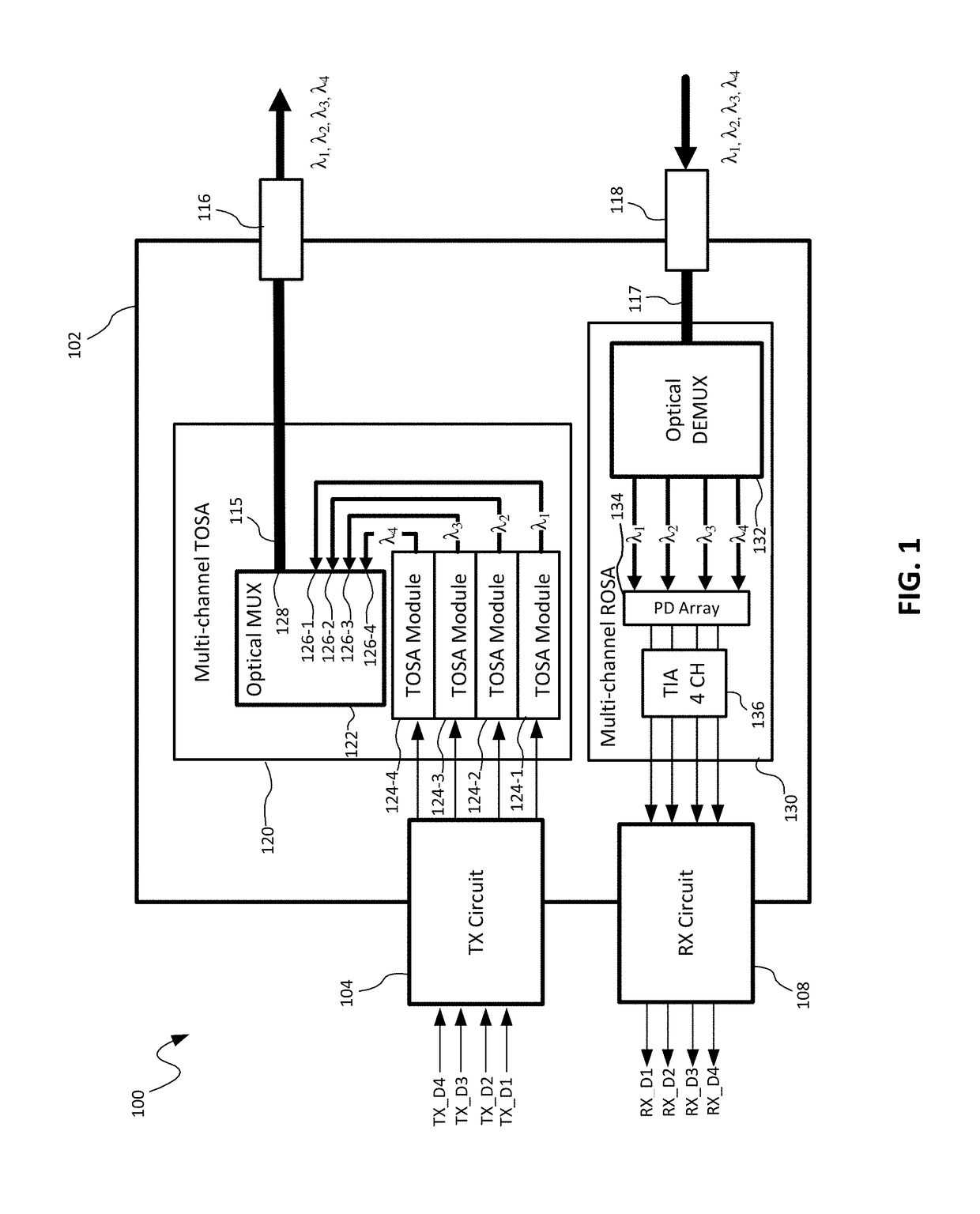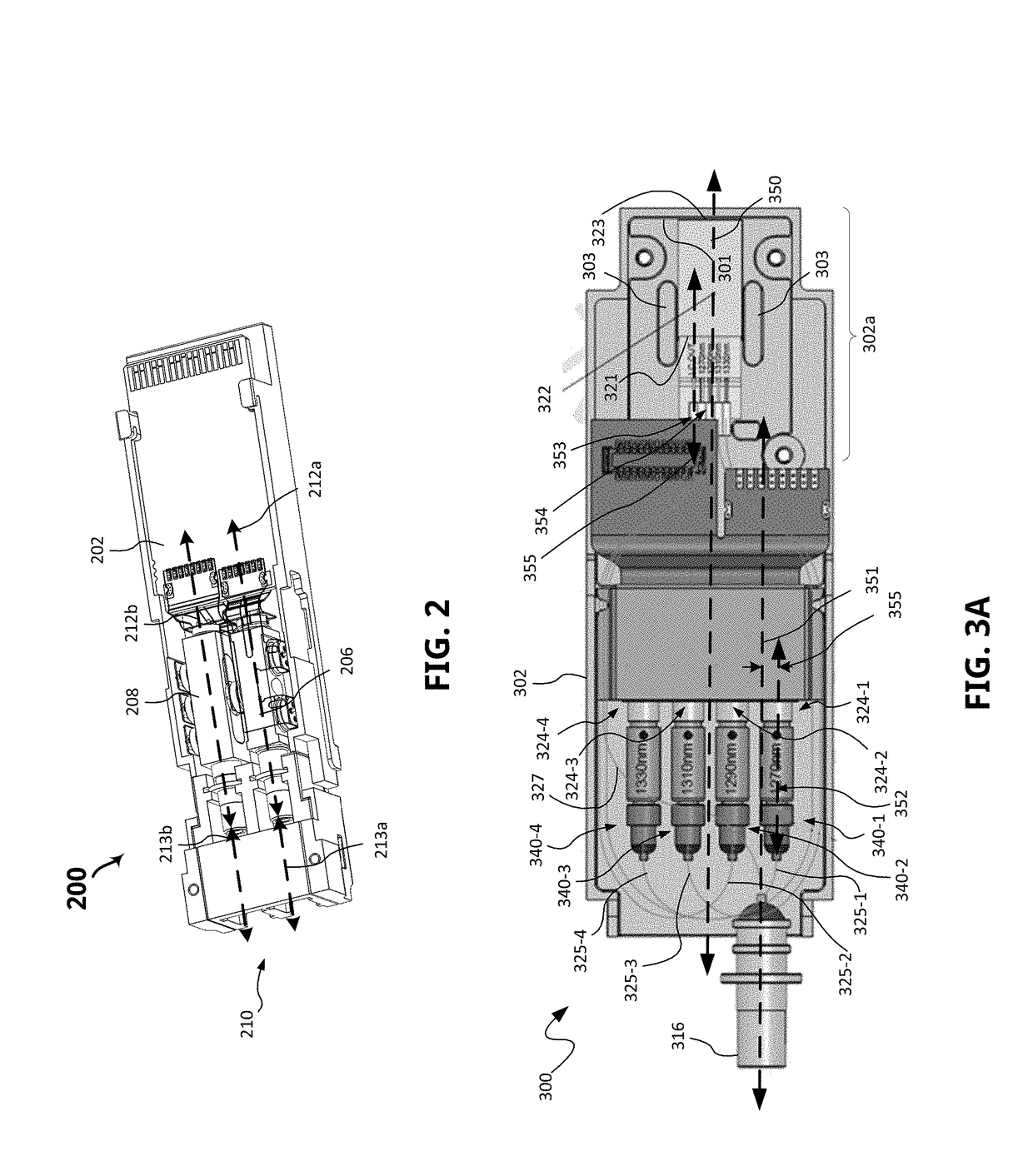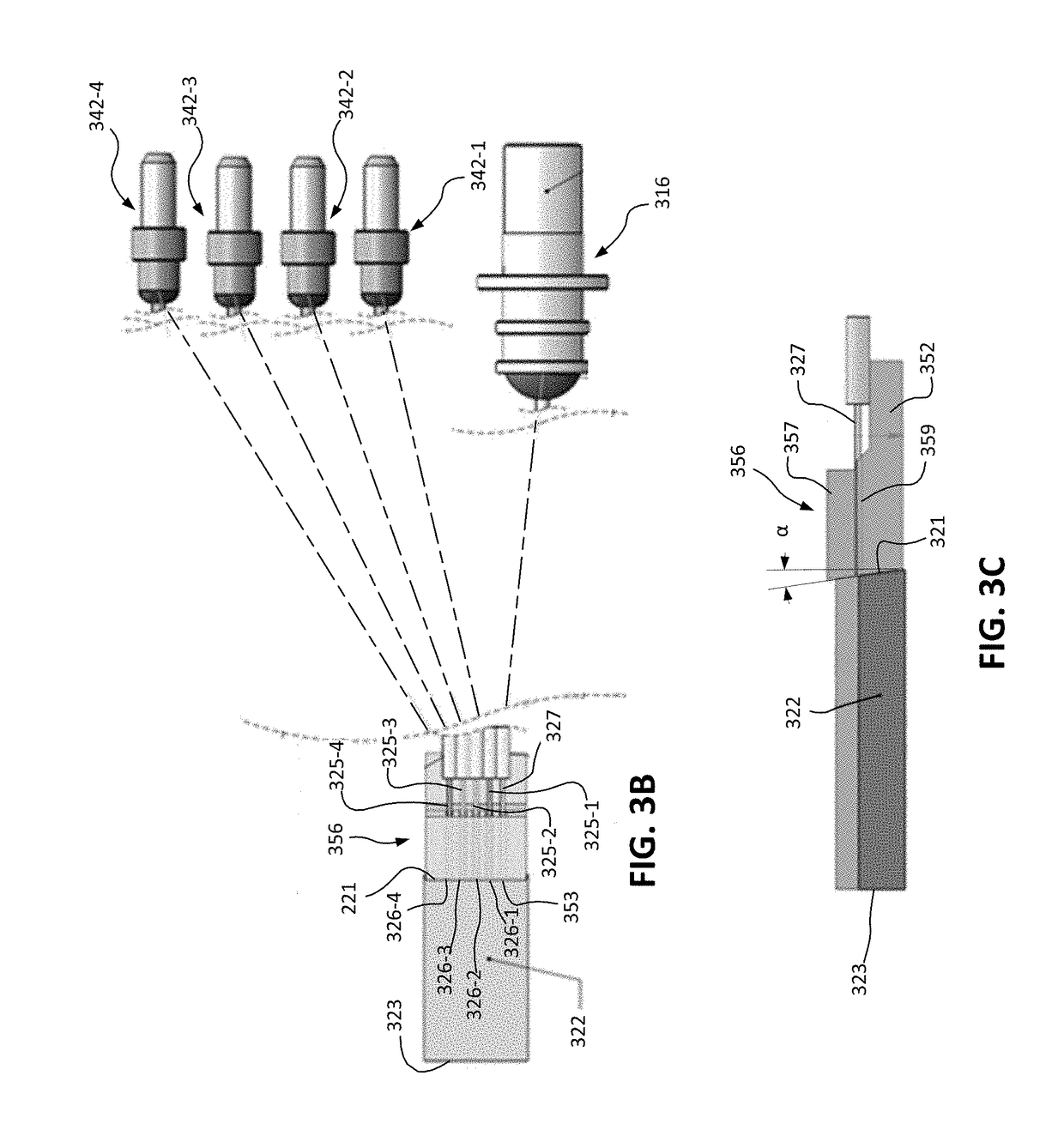Techniques for indirect optical coupling between an optical input/output port of a subassembly housing and an arrayed waveguide grating (AWG) device disposed within the same
a technology of arrayed waveguide grating and optical input/output port, which is applied in the direction of electromagnetic transceivers, instruments, fibre transmission, etc., can solve the problems of scaling down while maintaining nominal transceiver performan
- Summary
- Abstract
- Description
- Claims
- Application Information
AI Technical Summary
Benefits of technology
Problems solved by technology
Method used
Image
Examples
Embodiment Construction
[0012]Optical transceiver devices generally include a housing with various optical components, e.g., receiver optical subassembly (ROSA) modules and transmitter optical subassembly (TOSA) modules, disposed therein for launching and receiving channel wavelengths, and an optical input / output port for optically coupling the optical components to an external transmit and / or receive fiber. The particular position of the input / output ports may be governed by a particular standard. For instance, as shown in FIG. 2, the optical transceiver 200 implements a small-form factor plugging SFFP architecture which includes a pair of optical ports 210, e.g., LC ports, disposed at an end of the housing 202. The particular position of the optical ports 210 limits the position of a multi-channel TOSA 206 and a multi-channel ROSA 208, which are disposed in different sections of the housing 202. For instance, given the space constraints of the housing 202, each of the multi-channel TOSA 206 and ROSA 208 ...
PUM
 Login to View More
Login to View More Abstract
Description
Claims
Application Information
 Login to View More
Login to View More - R&D
- Intellectual Property
- Life Sciences
- Materials
- Tech Scout
- Unparalleled Data Quality
- Higher Quality Content
- 60% Fewer Hallucinations
Browse by: Latest US Patents, China's latest patents, Technical Efficacy Thesaurus, Application Domain, Technology Topic, Popular Technical Reports.
© 2025 PatSnap. All rights reserved.Legal|Privacy policy|Modern Slavery Act Transparency Statement|Sitemap|About US| Contact US: help@patsnap.com



